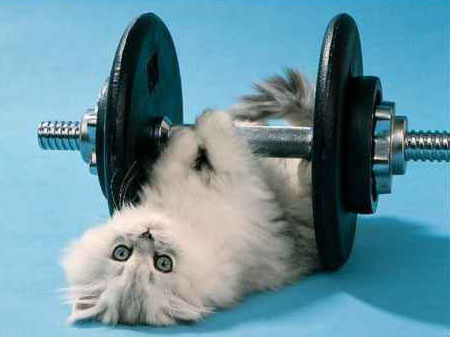When it comes to health and fitness, diet is key. We all know that if we eat healthy, we´ll feel healthy. But often times we don´t know how much to eat. Remember when it comes to dietary manipulation, you have three variables you can tinker with; Protein, Carbohydrates, and Fats. Protein is the building block of muscle and you need it at a consistent amount. This is one variable where too much manipulation is not recommended. Thus it really boils down to manipulating the remaining two variables. Fat and Carbohydrates are your energy sources. In simple terms, Fat energy is used more for endurance types events while Carbohydrates are used for explosive or strenuous physical exertion. 1 gram of fat has 9 calories of energy while 1 gram of Carbohydrates has 4 calories. (Protein, by the way, also has 4 calories of energy).
Now to set up a proper bulking or cutting diet, you need to find out how many calories you need to consume in the first place. In other words, you need to calculate your BMR or Basal Metabolic Rate. Your BMR means that you need a specific amount of calories for your body to survive. Now a lot of fitness and diet books stop right there and use that data to create a nutritional program. But that is a big mistake because your BMR calculates only your survival calories at a completely sedentary (bed ridden) state. Believe it or not, you are active the whole day (even if you´re just doing some light house work) which means you are burning additional calories that you need to account for. In order to do this, you need to find your BMR and then take that number and implement it in the Harris-Benedict Equation. Why? Because then you can get an accurate view of how many calories you need to maintain your current weight.

Let´s use an example:
- If a man´s BMR is 2100 calories that means that this person will need 2100 calories for his body to function properly. But remember! This is assuming he´s completely sedentary.
- Taking my 2100 calories BMR, I then plug in the number in the Harris-Benedict Equation.Assuming the individual is lightly active, you would multiply 2100 x 1.375 which gives 2887.5 calories.
- What does this mean? It means that the individual would need 2887.5 calories (accounting for his survival needs and lightly active lifestyle) in order to maintain his weight.
Now that we have an accurate assessment of our caloric needs, we have to organize a bulking or cutting protocol.
Bulking Protocol:
- If you want to increase your weight, then ideally you would consume 300- 500 calories over maintenance.
- So if my overall calories needed is 2887.5, then I would need between 3187.5 to 3387.5 calories.
- This will be distributed in the following way:
Protein = 1 gram+ per pound of bodyweight
Ex. If I weigh 215 lbs, I would consume minimum 215g of protein. This gives me 860 calories.
Carbohydrates = 1.5 - 2 grams per pound of bodyweight
Ex. If I weight 215 lbs, I would consume minimum 400g of Carbohydrates. This would give me 1600 calories.
So already we have taken in 1600+860=2460 calories. The remaining calories are made up from healthy fat sources. So if we take 3187.5 calories - 2460 calories = 727.5 calories will come from fat. Just divide this by 9 and we get 80.8 grams of fat.
Cutting Protocol:
Works similarly to the Bulking Protocol, but we seek to reduce our calories. In this case, we take our overall calories consumed and minus it by 300-500 calories. So we are aiming for between 2600 to 2900 calories. Here´s how it works.
Protein - 1 gram+ per pound of bodyweight
Why? Because we need to maintain consistent levels of protein to build muscle mass.
Ex. If I weigh 215 lbs, I would consume minimum 215g of protein. This gives me 860 calories.
Carbohydrates - 1 gram per pound of bodyweight
This is where we start manipulating our nutrients to suit fat loss.
Ex. If I weight 215 lbs, I would consume minimum 215g of Carbohydrates. This would give me 860 calories.
So far, we have consumed 1720 calories. If we take the low tier number of calories (i.e. 2600), this would mean that we need 880 calories to come from fat. That translates to 97.8g of fat.
And there it is folks, a simple understanding of nutrient manipulation to improve your life. Remember, all this is not written in stone. You can manipulate your nutrient variables to suit your goals but always be consistent and follow a plan. It will lead you to greater success.

No comments:
Post a Comment